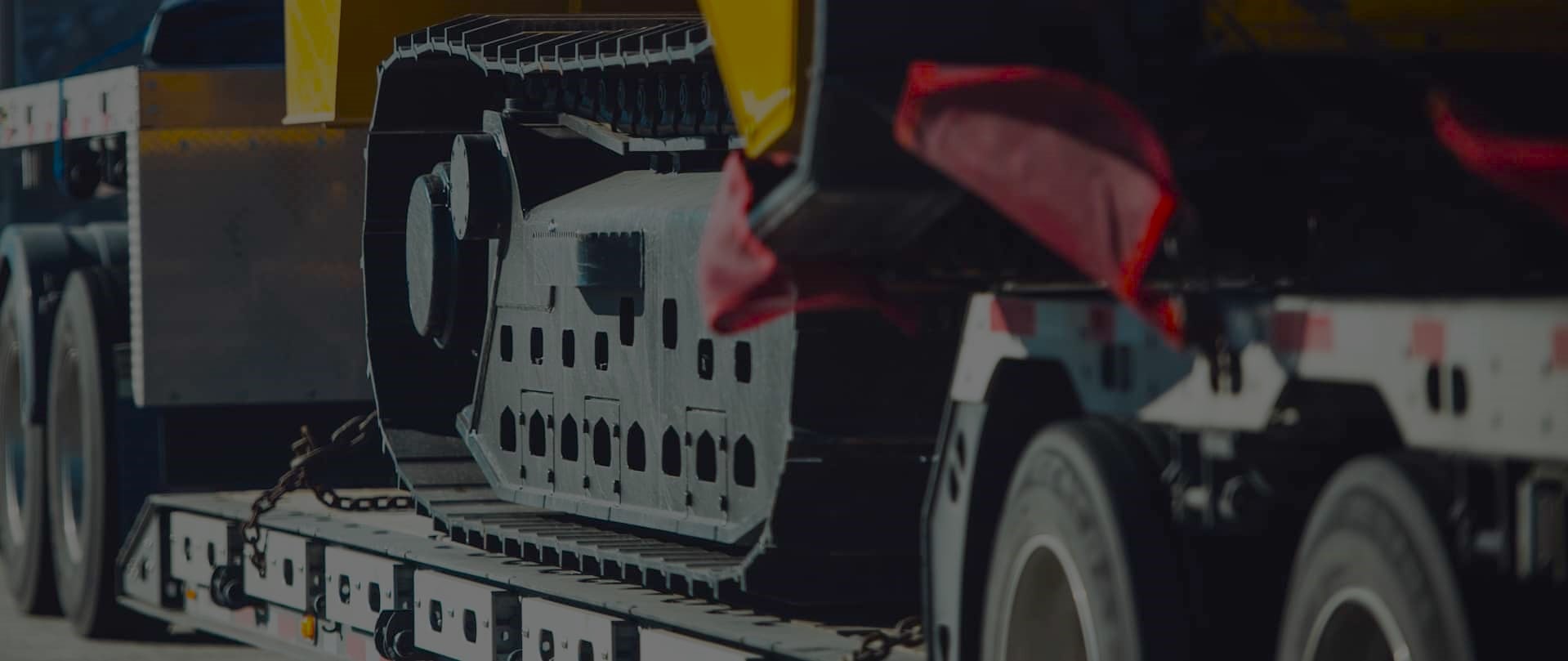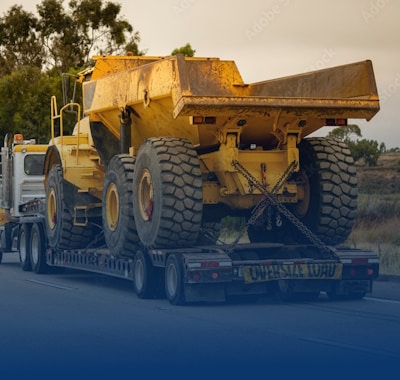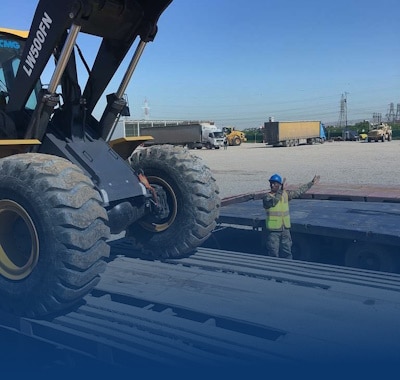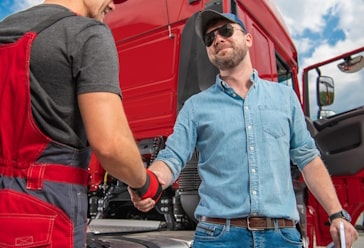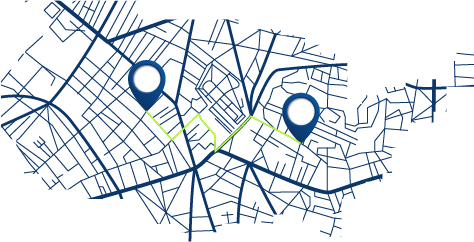Secure Oversized Tank Shipments: Key Safety Precautions
Freedom Heavy Haul can offer expedited Pickup and Delivery for any size shipment anywhere in the USA. Contact us today for No Hassle, No Pressure Pricing.
When you move oversized tanks, safety is key. You need to protect your cargo, crew, and the road. It’s important to follow safety tips to avoid problems like shifting loads or breaking rules.
Start by knowing the federal guidelines and getting the right permits. Use strong equipment to keep everything safe. Working with experts like Freedom Heavy Haul helps you stay on track and avoid mistakes.
This guide will show you how to plan your route, manage weight, and keep an eye on things in real-time. Discover how to steer clear of common issues and keep your oversized tank transport safe and efficient.
Understanding the Challenges of Oversized Tank Transportation
Transporting large tanks is more than just using a strong trailer. It involves hauling industrial fuel storage units or agricultural water reservoirs. These tasks come with unique risks. Knowing these challenges helps you follow safety guidelines for moving large tanks.
Common Risk Factors in Tank Transportation
Oversized loads face dangers that smaller shipments don’t. Key risks include:
- Road infrastructure limitations: Narrow bridges or uneven roads can destabilize loads.
- Tank material stress: Thin-walled tanks may deform under vibration.
- Human error: Improper securing accounts for 30% of tank-related incidents (DOT 2023).
Impact of Size and Weight on Safety
Larger tanks are harder to stop or turn because of their size and weight. For example, a 20,000-gallon steel tank can weigh over 170,000 pounds. This is more than most trailers can handle. Always check weight limits with tools like Caterpillar’s Load Calculator. Here’s a quick guide to common tank sizes:
| Tank Capacity (Gallons) | Approx. Weight (lbs) | Required Permits |
|---|---|---|
| 5,000 | 40,000 | Statewide Oversize |
| 10,000 | 85,000 | Multi-State Escort |
| 20,000 | 170,000 | Federal Oversize |
Critical Safety Considerations
Safe transport of large tanks starts with careful planning. Make sure to check equipment like tie-down straps and axle weights before you leave. The DOT says:
“Load stability is non-negotiable. Conduct pre-trip inspections with certified professionals to avoid compliance violations.”
Do route surveys to find low-clearance zones. Use GPS systems made for oversized loads, like Garmin Dezl OTR700. Training drivers in load management helps them handle surprises with confidence.
Essential Pre-Transport Safety Assessment Steps
Before moving an oversized tank, do a detailed safety check. This step is key to avoid risks and meet DOT standards. First, check the tank’s structure for cracks, corrosion, or weak spots.
- Check internal components: Make sure valves, seals, and vents work right.
- Verify weight distribution: Use Caterpillar’s tools to check if it’s balanced.
- Review documentation: Check if permits, insurance, and hazard labels are up to date.
“A thorough pre-transport assessment isn’t optional—it’s the backbone of secure transportation of large tanks. Missing a single step can lead to catastrophic failures.” — Industrial Safety Quarterly
Use GPS to plan your route. Look out for low bridges, narrow roads, or weight limits. If needed, get local authorities to provide escorts. Also, watch the weather to avoid icy roads or strong winds.
Tools like WeatherGuard Pro can help adjust your schedule based on weather. Secure transportation of large tanks means thinking ahead. Have a team check the equipment and test the tank’s stability. By following these steps, you make the journey safer for everyone.
Safety Tips for Transporting Oversized Tanks
When moving big tanks, you need to be very careful. This is to follow rules and keep everyone safe. Here are some tips to help you do it right.
Route Planning and Analysis
First, plan your route to avoid tight spots. Use GPS for oversized loads to find out where you can go. Make sure you have all the right permits before you start—state rules are strict.
- Check bridge limits and clearances
- Avoid road construction zones
- Make sure turns are wide enough
Weather Considerations
Look at the weather forecast before you go. Wind and ice can be dangerous. If it’s bad, wait until it’s better.
“A proactive approach to weather reduces delays and prevents accidents. Always prioritize driver safety over tight deadlines.”
Communication Protocols
Keep in touch with everyone involved. Use radios for updates. Tell others about your route and when you’ll be there.
Emergency Response Planning
Be ready for anything unexpected. Trucks should have kits for spills and fires. Drivers should know what to do in an emergency.
- Secure the load right away
- Call for help if needed
- Use flares or cones to guide traffic
Learning to move big tanks safely takes planning, tech, and teamwork. Regular drills and safety plans help everyone stay ready for problems.
Required Safety Equipment and Tools
When moving oversized tanks, safety is key. The right tools are essential to avoid accidents. Here’s what you need to focus on.
- Heavy-Duty Straps & Chains: Rhino USA’s ratchet straps keep tanks secure. Choose DOT-approved chains that can handle your tank’s weight.
- Load Binders: Peerless and Columbus McKinnon’s lever binders make tightening chains safer and easier.
- Corner Protectors:Erickson’s rubber guards protect tank edges from damage and strap wear.
| Equipment | Purpose | Top Brands |
|---|---|---|
| GPS Tracking Systems | Monitor tank position and movement in real time | Garmin, Trackimo |
| Reflective Tape | Enhance visibility during low-light conditions | 3M, Brady |
| Emergency Spill Kits | Contain leaks or hazardous material releases | New Pig, SpillFix |
“Oversized tank safety tools aren’t optional—they’re the difference between a routine delivery and a catastrophic failure.” — U.S. Department of Transportation Guidelines
Check your safety tools often for damage. Replace anything that’s frayed or corroded right away. Make sure your team knows how to use the equipment. For extra safety, use backup restraints like Crosby shackles or steel cables.
Good safety equipment for oversized tanks lowers your risk and keeps your team safe. Use these tools with the safety steps from earlier to create a solid safety plan.
Securing and Stabilizing Your Tank Load
Managing oversized tank loads safely is key. This includes moving industrial chemicals or water tanks. It helps prevent accidents and spills. Focus on three main areas for safe transport.
Proper Tie-Down Techniques
Use top-notch ratchet straps with a 10,000 lbs WLL for tank stability. Brands like Ancra International or Erickson Manufacturing are good choices. Make sure straps are at a 30–45° angle to stop movement.
Check the straps’ tightness after 50 miles. Adjust as needed to keep everything secure.
Load Distribution Guidelines
Spread the load evenly on the trailer bed. Heavier parts should be near the axles. For cylindrical tanks, place them lengthwise with support beams underneath.
Here’s a quick guide:
| Tank Weight (lbs) | Minimum Straps Required | Spreader Bar Placement |
|---|---|---|
| 15,000–25,000 | 4 | Every 8 feet |
| 25,001–40,000 | 6 | Every 6 feet |
| 40,001+ | 8+ | Every 4 feet |
Stability Testing Procedures
Do a pre-trip test by gently rocking the tank. Use inclinometers from RealWheels Corp. to check tilt angles. Also, track vibrations with GPS systems like Samsara. Always re-test after sudden stops or rough terrain.
“A well-secured load isn’t just about compliance—it’s about protecting everyone on the road.” — U.S. Department of Transportation
Make securing oversized tank loads a priority. Combine these steps with driver training and equipment checks for the best results.
Regulatory Compliance and Documentation
Following oversized tank transportation rules is key to safe and legal transport. Without the right permits or paperwork, shipments can be delayed or face fines. First, figure out which federal and state laws apply to you. The Federal Motor Carrier Safety Administration (FMCSA) has basic rules, but states like Texas or California might have stricter ones for heavy loads.
Proper oversized tank documentation includes:
- State-issued oversize/overweight permits
- Vehicle inspection reports from certified mechanics
- Route-specific authorization forms
- Emergency contact lists for transport corridors
“One missing signature on a permit can ground a $500,000 shipment. Double-check every document against current oversized tank transportation regulations before departure.” – U.S. Department of Transportation Compliance Advisor
Digital tools like PermitPro or TruckingDocs help track permit expirations and renewals. For trips across states, DAT or Rand McNally offer updates on bridge clearances and road restrictions. Always carry physical copies – electronic systems can fail during roadside checks.
Inspections often look at load stability records and driver certifications. Keep time-stamped photos of how you secure your load. This way, you’re ready if there’s any movement during transport. Not following rules can cost over $10,000 per offense in most places, so be careful.
Driver Training and Certification Requirements
Driving oversized tanks is more than just driving. It involves navigating tight spots and dealing with weather changes. Drivers need formal training, practice, and ongoing learning to stay safe and follow the rules.
Specialized Skills Development
Training for oversized tank drivers includes learning to maneuver carefully and predict hazards. They learn to check for clearance and manage the load’s stability. Through simulations and practice on the road, they gain confidence in handling unexpected situations.
Safety Certification Programs
Certification makes sure drivers meet all the necessary standards. Good programs cover:
- Federal Motor Carrier Safety Administration (FMCSA) regulations
- Emergency response for leaks or rollovers
- Advanced ways to secure the load
Getting certified through programs like those from the Commercial Vehicle Training Association is key. It not only meets legal requirements but also lowers the risk of accidents.
Ongoing Training Requirements
Rules and equipment keep changing. Drivers need yearly updates on new laws and safety tools. Companies like Freedom Heavy Haul help by adding the latest safety tips to their training. Workshops on staying alert and managing fatigue are also important.
“Structured training is not just a choice—it’s essential for preventing accidents. Certified drivers are 40% less likely to get fined.” – National Tank Truck Carriers Association
By focusing on training, your team can handle complex loads safely. Make sure they stay certified and have regular skill checks. This keeps your team safe and professional.
Real-Time Monitoring and Safety Systems
Keeping your oversized tank safe during transport is more than just physical checks. Modern systems give live data to stop risks early. They track location, internal pressure, and more, giving you control over unexpected situations.
Oversized tank safety systems use both hardware and software for full protection. For example:
- GPS trackers update routes and detect deviations instantly.
- Environmental sensors alert you to temperature spikes or leaks.
- Stability monitors check load balance and tilt angles.
“Real-time data turns reaction into prevention,” says a transportation safety expert. “It’s the difference between solving a problem and stopping it.”
Here’s how leading technologies compare in functionality:
| System Type | Key Features | Example Brands |
|---|---|---|
| GPS Tracking | Real-time location updates, route deviation alerts | Garmin, Trimble |
| Cargo Sensors | Temperature, pressure, leakage detection | Honeywell, Siemens |
| Stability Monitors | Load shift alerts, tilt detection | Boltaron, Emerson |
Using oversized tank safety systems with trained people means quick action. Alerts to drivers or control centers lead to fast responses. This way, shipments stay on track and avoid delays.
Advancing Your Tank Transportation Safety Strategy
To improve your oversized tank transportation safety, always be ready to change. Start by checking your safety plans every three months. Use tools like Trimble GPS or Cisco IoT sensors to watch how loads move in real time. These tools help follow safety rules better and cut down on mistakes.
Make sure your drivers get training that meets FMCSA standards. Courses from Smith System Safety or JJ Keller’s Defensive Driving keep them up to date. Add hands-on practice to deal with sudden weather or road dangers. This mix of learning and doing closes knowledge gaps.
Keep up with all safety laws, like DOT Special Permits and OSHA rules. Use digital tools like Samsara to manage paperwork. This makes it easier to meet safety standards and pass audits.
Upgrade your equipment, like twist locks or brake systems, from brands like Ancra International. Test new gear on low-risk trips first. This way, you can improve your safety plan without stopping your work.
Join groups like the American Trucking Associations to share ideas. Getting feedback from others can show you new risks or solutions. Working together makes your safety efforts stronger and builds trust with clients like Chevron or ExxonMobil.
Your effort to get better doesn’t just prevent accidents. It makes your team leaders in safe, efficient transport. Every change you make today helps keep tomorrow’s shipments safe.
